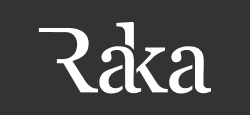Did you know that “Eighty-three percent (83%) of people expect companies to respond to social media comments within a day or less”? With the ability to comment anytime and anywhere, it's crucial to keep an eye on what your audience is saying on social media. Nowadays, social media isn't just for personal connections—it's a goldmine of business insights.
If you're a business owner, understanding social listening and social monitoring can be a game-changer for your strategic decisions regarding your online reputation management. Responding to comments, tweets, and other social interactions is more than just a follow-up; it's about learning how to leverage your audience's thoughts to make better strategic decisions that benefit both you and your consumers.
Social listening and monitoring is an inbound marketing approach designed to delight your audience by ensuring that all comments and concerns are addressed promptly. Let's explore what these terms mean and how they can benefit your business.
What is social listening?
You might be asking yourself, what is the difference between these two terminologies?
Social listening is all about how your company and related keywords, topics, etc., are being communicated online. Are your audience members responding positively to certain company initiatives? Or are they concerned about a topic arising within your industry? It’s essential to monitor these conversations, both positive and negative, to gain a better understanding of what your audience finds important.
What is social monitoring?
Social monitoring focuses on the quantitative data surrounding social listening. Metrics like mentions, hashtags, keywords, and customer sentiment help you understand how your audience is reacting to your brand.
These two terms work hand in hand. It’s crucial to understand what your audience is thinking and how to gather these discoveries to create content that truly resonates with them.
How to implement social listening and monitoring
We understand how difficult it can be to keep up with interactions on multiple platforms—it's hard to be everywhere at once. Thankfully, with the rise of technology, there are several social listening tools that can help streamline your company's efforts. Understanding the available options and their benefits can help you determine which tool is best suited for your company.

HubSpot social media management
HubSpot currently offers social media management tooling that enables you to monitor interactions across your social media accounts. This platform provides a comprehensive dashboard where you can track important metrics and analytics, such as likes, comments, and shares, giving you a clear view of conversations happening across your brand’s various social accounts.
But that's not all! In addition to monitoring interactions, HubSpot's software allows you to create, publish, and schedule social content directly within the platform. This seamless integration simplifies your social media management process, ensuring that your content is consistently posted at optimal times and helping you maintain an active and engaging online presence.
Brandwatch
Brandwatch is a software designed to track customer sentiment and conversations related to important keywords and industry information. This tool helps you gain a deep understanding of your consumers' behavior and preferences. By monitoring these discussions, you can identify trends, gauge public opinion, and respond to customer needs more effectively.
In addition to tracking customer sentiment, Brandwatch also monitors industry competitors. This feature allows you to gain valuable insights into the conversations and trends that impact your competitors. Understanding these dynamics can help you stay ahead of the competition, identify new opportunities, and refine your marketing strategies.
Talkwalker by Hootsuite
Talkwalker, created by Hootsuite, is a powerful social listening tool that tracks thousands of conversations about your brand and industry. Using advanced AI, Talkwalker not only monitors online discussions but also has the capability to track mentions of your brand in photos and videos. This comprehensive tool provides valuable information and metrics regarding how your brand is perceived across various platforms, helping you stay informed and responsive to your audience's needs and opinions.
How to effectively leverage your online reputation management
The goal of online reputation management is to create a positive online presence, build trust, and protect your company's reputation. By staying engaged in conversations about your company, you gain valuable insights into what your audience cares about. Responding promptly to consumer inquiries shows that your company is listening and values their opinions. Quick responses to both positive and negative feedback demonstrate that your brand cares.
Receiving lots of online mentions and don't know where to start? Utilize your company's social listening tools to evaluate conversations surrounding your brand. Start by addressing the most time-sensitive comments and work through the list. It's best to mitigate negative conversations first to quickly calm any issues and prevent them from escalating.
By managing these interactions efficiently, you can stay on top of things and respond promptly, showing your audience that you truly care about their feedback and concerns. We know this might seem overwhelming, but this proactive approach enhances your online reputation and builds trust and loyalty among your audience.
How these insights can help you make strategic decisions
Now that you are a master at social listening and monitoring, it's time to take action on those insights. These observations are an important tool your company can utilize to optimize your marketing strategy for both content creation and internal decision-making.
Let's say your company gets a handful of comments per post asking about how a certain product feature works. While responding to each comment is a great start at social listening, it could show that you can utilize this information in a more effective way. You could create a carousel post on Instagram describing this feature and its key benefits, or you could create a reel demonstrating how to effectively utilize it.
Implementing these conversations into your company's content calendar is a great way to bring exposure to a topic your audience is interested in. Additionally, you could send this feedback to the research and development team to explore potential improvements for future versions of the product.
By leveraging this relevant information, your company can create more relevant and engaging content that meets your audience's needs and preferences, ultimately enhancing your overall content marketing strategy.






